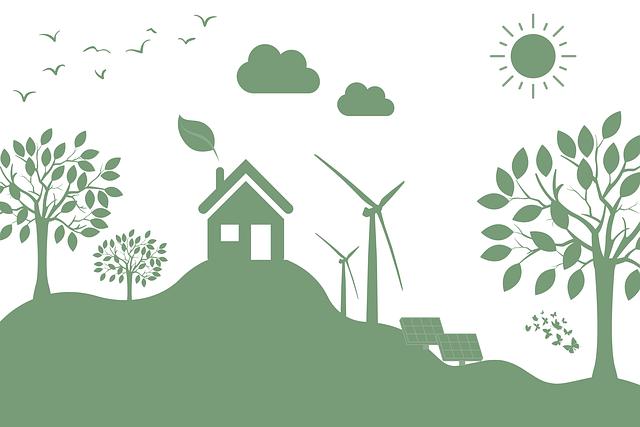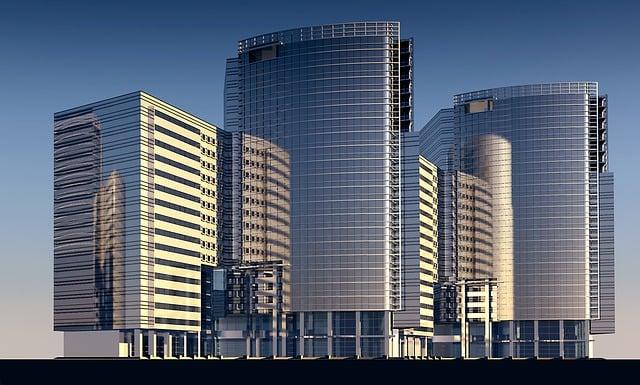In the heart of South Asia lies Pakistan, a nation rich in cultural heritage and resilient spirit, yet confronted with an array of infrastructural challenges that threaten to stifle its potential for economic growth. As the world leans into the 21st century, the call for revitalizing Pakistan’s infrastructure has never been more urgent. From modernizing transport networks to enhancing energy grids, the path to sustainable economic development runs through the nation’s ability to build and maintain robust infrastructure. This article delves into the critical need for infrastructural overhaul, exploring how strategic investments can not only promote economic stability but also unlock opportunities for millions, ultimately paving the way for a more prosperous future. By examining current projects, potential reforms, and lessons from successful models around the globe, we aim to shine a light on the integral role that infrastructure plays in shaping Pakistan’s economic destiny. Join us as we navigate the intricate relationship between infrastructure development and economic growth, and uncover the blueprint for a brighter tomorrow.
Transforming Transportation Networks for Seamless Connectivity
In the contemporary landscape of urban development, the integration of smart technologies into transportation networks is essential for creating a fluid and efficient system. By leveraging innovative solutions such as intelligent traffic management systems and real-time data analytics, cities can optimize traffic flow, significantly reduce congestion, and enhance safety. The adoption of electric public transport options, alongside dedicated cycling and pedestrian paths, further promotes sustainable mobility, leading to a cleaner environment and healthier populations. Moreover, understanding the unique geographical and cultural contexts of various regions enables tailored approaches that respect local needs while fostering broader economic opportunities.
To effectively revamp the existing infrastructure, Pakistan must focus on establishing a holistic framework that aligns both urban and rural connectivity. This could involve multi-modal transport solutions, which seamlessly integrate railways, roadways, and air travel, ensuring that remote areas are not left behind in the pursuit of progress. Key investment areas include:
- Upgrading existing roads and highways to accommodate the growing demand for transportation.
- Implementing modern rail systems that connect major cities with rural hinterlands.
- Introducing smart public transit options that prioritize user convenience and reliability.
- Developing extensive ride-sharing platforms to maximize efficiency and minimalize costs.
| Investment Area | Expected Benefit |
|---|---|
| Road Infrastructure | Reduced travel times and accident rates |
| Rail Modernization | Enhanced connectivity and economic development |
| Smart Transit Solutions | Increased public transport usage and efficiency |
| Ride-sharing Services | Cost-effective and environmentally friendly travel |

Sustainable Energy Solutions: Powering the Future
To truly revamp the infrastructure of Pakistan and stimulate economic growth, the integration of renewable energy sources within urban and rural planning is crucial. By harnessing resources like solar, wind, and hydropower, Pakistan can not only reduce its reliance on fossil fuels but also create job opportunities in the green energy sector. Aligning these renewable solutions with existing infrastructure will stimulate innovation, enhance energy security, and improve overall resilience against climate change. Key initiatives should focus on:
- Development of solar parks in arid regions to maximize energy capture.
- Implementation of decentralized wind farms in coastal areas for efficient electricity generation.
- Investment in micro-hydropower systems to empower remote communities.
In addition to the deployment of renewable technologies, modernization of the current energy distribution networks is imperative. Upgrading the transmission infrastructure with smart grids can optimize energy management, reduce losses, and enable dynamic response to real-time energy demands. Incorporating battery storage solutions will further enhance grid stability and reliability. The following table outlines proposed upgrades and their potential benefits:
| Upgrade | Benefit |
|---|---|
| Smart Meter Installations | Improved data collection and energy efficiency |
| Grid Automation | Reduced downtime and faster recovery during outages |
| Energy Storage Systems | Enhanced load balancing and peak shaving |

Smart Urban Planning: Building Resilient Cities
In today’s rapidly urbanizing world, cities face numerous challenges including population growth, climate change, and resource scarcity. Effective urban planning is essential for creating spaces that are not only livable but also sustainable and resilient. By integrating technology and community needs, planners can develop smart systems that enhance mobility, increase energy efficiency, and promote social equity. Innovative strategies such as mixed-use developments, green spaces, and renewable energy infrastructure can transform urban environments into thriving ecosystems that support both economic growth and environmental health.
Furthermore, the integration of data-driven decision-making in urban planning leads to informed policies that prioritize community well-being. By utilizing advanced tools such as Geographic Information Systems (GIS) and real-time analytics, city planners can identify spatial inequalities and allocate resources effectively. This approach fosters a holistic development framework where key components include:
- Smart transportation networks
- Energy-efficient buildings
- Accessible public spaces
- Resilient infrastructure against climate impacts
As cities evolve, public and private sector collaboration becomes vital, ensuring that sustainable practices are embedded in all levels of urban development. By prioritizing community engagement and transparent planning processes, Pakistan can lay the groundwork for resilient urban environments that not only accelerate economic growth but also enhance the quality of life for its inhabitants.

Public-Private Partnerships: Driving Infrastructure Investment
In recent years, Pakistan has recognized the significant role that collaboration between the public and private sectors plays in revitalizing its infrastructure landscape. By leveraging the expertise and resources of private entities, the government can expedite project delivery, enhance efficiency, and mitigate financial risks associated with large-scale infrastructure initiatives. Key benefits of such collaborations include:
- Improved project financing options, reducing the burden on public budgets.
- Access to cutting-edge technology and innovative solutions.
- Increased operational efficiencies through private sector management practices.
- Enhanced accountability and transparency in project execution.
As Pakistan embarks on its ambitious infrastructural projects, it is imperative to establish a robust framework that encourages private investment. One effective approach would be the creation of public-private partnership (PPP) models that not only outline the sharing of risks and rewards but also ensure fair returns for investors. This model can be further strengthened by a well-defined regulatory environment. Below is a simplified overview of potential PPP project types:
| Project Type | Description |
|---|---|
| Build-Operate-Transfer (BOT) | Private sector builds and operates the project for a set period before transferring ownership to the government. |
| Design-Build-Finance-Operate (DBFO) | Private partners design, build, finance, and operate the infrastructure, optimizing costs and timelines. |
| Lease Agreements | Government leases public assets for private management, allowing for expertise while retaining ownership. |
Insights and Conclusions
As the sun sets on the horizon of possibilities for Pakistan, the path to economic rejuvenation is increasingly clear. Revamping the nation’s infrastructure stands not merely as a necessity but as a pivotal opportunity to unlock untapped potential. By fostering modern roadways, reliable energy grids, and advanced communication networks, Pakistan can connect its vibrant markets, elevate its commerce, and enhance the quality of life for millions.
Yet, this transformation requires not just investment, but collaboration—between government, private sector, and communities. It calls for visionary planning and a commitment to sustainable practices that honor both the environment and future generations.
As we look toward the dawn of a new era, let us remember that infrastructure is more than concrete and steel; it is the lifeblood of progress. By harnessing our collective ingenuity and determination, Pakistan can lay the foundation for a thriving economy that reflects the spirit and resilience of its people. The journey may be long, but with each brick laid and each project completed, the vision of a prosperous future comes closer to reality.



